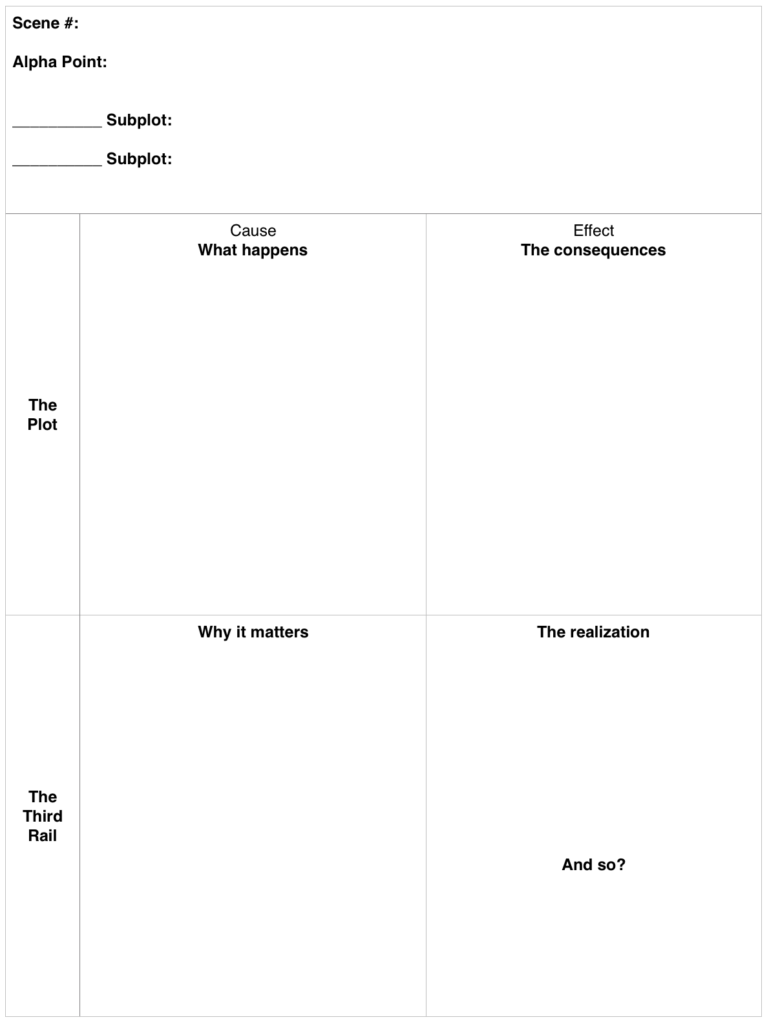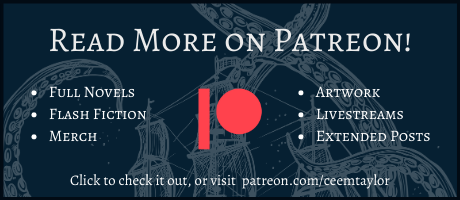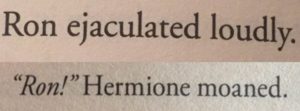When I first started writing, I must have googled every single permutation of “how do I write a good book?” about a thousand times, only to find that many writers are close-lipped on the exact process they use to put that idea into words.
This post is dedicated to drawing pack the curtain on part of my writing and drafting process, in which I lay down the bones of the external plot structure. I can’t cover my whole planning process in a single post, so I’m keeping the focus narrow, here, but I hope it provides you with some inspo or food for thought.
I plan the external portion of my plot with a variety of tools—chiefly three-act (specifically drawn from Save the Cat Writes a Novel) and character-focused scene cards.
Some writers find structures like three-act too prescriptive for their tastes, or otherwise, don’t like using physical tools like beat sheets and scene cards in their pre-writing process. But when I’m writing and editing (either for myself or for a client), I lean heavily on tools like three-act as analytical frameworks to help me conceptualize the story and control its movement, tension, and pacing.
Before I delve into how I do this, I’d like to add a note for the pantsers in the crowd:
A note for the pantsers
(For those of you who haven’t heard the term before, a ‘pantser’ is a writer who does little to no planning before sitting down and starting to write. They often consider structural tools like three-act, scene cards, or outlining to be an impediment to the creative process.)
If you’re a dyed-in-the-wool punster who wants nothing to do with an outline, that is fine—but structural tools can still work for you! The trick is, instead of using beat sheets or scene cards prior to drafting, you’ll take them out and fill them in after you’ve already written your rough draft.
That way, your by-the-seat-of-the-pants creative process will remain intact—and you can use structural tools to load test the strength of your plot, arcs, and pacing in order to identify where and how to shift things around in revisions.
…and a note for the plotters
Here’s the thing, though:
Pantsers, you’re not alone. All of us have a little pantser in us, whether or not we realize it. The story we imagined in the very beginning isn’t necessarily the story that ends up on the page once we’re done writing. While I won’t say there’s a way to use beat sheets or scene cards wrong, I can say that it’s a mistake to hem yourself in so hard that you don’t listen to that niggling little voice telling you that something isn’t right about the connective tissue between acts, or the way the climax plays out, or the development of the romantic arc.
It is absolutely okay (and often necessary!) to take stock of the story at each major benchmark and think critically about whether the structure as it’s currently planned still works given what’s made it onto the page.
I frequently stop at the midpoint to assess my beat sheet, scene cards, and outline for the second half of the story… and often make major changes to bring my plan in line with a revised vision based on how the story actually played out as I was writing. This kind of flexibility is a good thing! It leaves us room for spontaneous creativity and those special, beautiful moments when something we didn’t plan ends up on page but works so heckin’ well we can’t help but keep it.
Without further ado…
How I use beat sheets and scene cards to structure my stories
If you’re unfamiliar with Save the Cat, I recommend picking up a copy at a local bookstore or library. You can learn more about it here.
Otherwise, here’s a free and short explanation of the beats.
A caveat: as I mentioned earlier, this isn’t my full planning process. By the time I start filling out beats, I’ve done a ton of pre-writing and have already figured out the rough shape of the protagonist’s growth arc (and likely, the growth arcs of the major supporting characters, too—especially if there’s a romance in the story). Character and romance arc planning is a post for another time.
Moving on:
Because I write character-first, I don’t start working on my external plot until I know where I want my characters to end up by the end of the story and have a vague idea of what needs to happen to get them there. Overall, I tweak the plot to fit the characters and their growth arcs—not the other way around.
If you’re not a character writer, this might not work for you! (But I recommend trying it! Character-first is fun ;))
Thus, by the time three-act / Save the Cat gets involved, I have fleshed-out characters and a bare-bones plot. Sometimes, I only know the general premise and have a vague idea of the conclusion with one or two specific images / sources of inspiration along the way.
To get that external plot in shape, I start by mapping out the major beats of my story.
Below is a list of three-act beats from Save the Cat. I’ve bolded the ones I consciously think about while in the planning phase:
Opening Image
Theme Stated
Set-up
Catalyst
Debate
Break into Two
B Story
Fun and Games
Midpoint
Bad Guys Close In
All Is Lost
Dark Night of the Soul
Break into Three
Finale
Final Image
Past the scaffolding for act one, which I try to lay down during this stage, the later story beats all have something in common: they’re the story’s major turning points.
Start with act one, fill in major turning points
I start planning the external plot by deciding upon an opening image because I already intrinsically understand the scene’s requirements; I’ve done enough character pre-work that I know exactly what struggles my protagonist is facing at the very beginning of the story. In fact, most of act one usually comes together quickly for me. I have a general idea of the external conflict my protagonist will face in the story, and the first act is devoted to forcing them to accept the call to action and decide how and why they’re going to set out to solve this external problem—and those hows and whys are intrinsically tied to the character work I’ve already done.
(In other words: the hows and whys march in tandem with that protagonist’s pre-story goals and motivations, all of which I’ve already decided upon.)
This takes me into the break to act two, at which point my ideas become hazier. To avoid getting bogged down in the weeds of the ‘fun and games’ beat, the next event I plan is the story’s midpoint.
When plotting the midpoint, I ask myself: what external event happens that, driven by the protagonist’s actions, causes them to reevaluate their goals and motivations for the rest of the story?
I tend to think of the midpoint as either a major victory (on the back of which the protagonist realizes the victory was hollow, pyrrhic, or has another similar oh NO moment that sends them scrambling) or a major defeat (after which the protagonist realizes what they’ve been missing all along and finally figures out what steps to take towards the climax).
Why do I plan the midpoint before either half of act two? Because the events of act two provide the framing context and structural support for that vital midpoint beat. Without first understanding how the story turns at the midpoint, I can’t understand what needs to brace it on either side.
Of course, there’s another major turning point at the end of act two / beginning of act three. This turning point encompasses the three major beats on either side of that doorway: All is Lost / Dark Night of the Soul / Break into Act Three.
In other words: what terrible event forces the protagonist to risk it all and finally, finally complete their growth arc? And, how does completing that growth arc give them the solution to the external plot problem?
I might have a general idea of what I want my climactic scenes to look like, but often, I’m missing concrete details at this stage. The next scene that I truly have a vision for is that final image. It’s a mirror of the opening image, it demonstrates the full range of my protagonist’s growth arc, and furthermore, it’s the (often happy) ending the events of the climax must engineer.
I can’t plot my climax until I understand how I want my story to end.
Once these major beats are down, I can start filling in the connective tissue that’ll get my characters from one point to the next. I do that using scene cards.
Using scene cards to fill in narrative beats

While dreaming up the events that will bring my protagonist (and/or supporting cast) from one major plot event to another in a logical, authentic, and interesting way, I rely heavily on scene cards both to test and to flesh out my ideas. They help me map out my arcs and ensure the events of each scene 1) flow into one another; 2) impact what happens in the next scene; 3) are driven by my characters’ goals/motivations; 4) advance at least one vital story arc.
Sometimes, I use these cards for larger events or try/fail cycles just to make sure I have all my bases covered.
Whenever I’m using a scene card, I’ll fill out the boxes with as much detail as I can. What happens is a short summary of the event itself. This event should be protagonist-driven, and Consequence is the clear and external result of their actions.
Why it matters, Realization, and ‘and so’ are how the external plot interacts with the character arc. Why do these events matter to the character? What does the character realize while these external events unfold? What do they decide to do next after encountering the consequences of the past scene/sequence?
If you’re wondering what an example of this might look like… check it out:
Let’s say I’m writing a romantic thriller. My protagonist is Ana, an editorial intern struggling her way up the ladder in a major New York publishing house. The love interest is Loula, an aspiring ballet dancer who works part-time at her family’s diner to keep her finances in order while breaking into the industry. They end up at a bodega down the street from Loula’s family diner at the same time… just as it’s held up by a gunman who takes everyone inside hostage.
The scene in question starts before, but leads into the inciting incident where the gunman enters the bodega.
Ana is a pretty selfish character who’s a little bit of a scatterbrain. The scene begins when Ana decides to make a sandwich for lunch in her office’s communal kitchen. She goes into the fridge and realizes she’s forgotten to buy more sandwich pickles. She decides to make her sandwich anyway, ‘borrowing’ her coworker Jason’s pickles without asking (what happens). But Jason walks into the kitchen mid-sandwich-prep, catches her, and blows up at her for stealing (consequence).
Jason is a full-time employee and one of the editors Ana needs to work with on a daily basis. Not only that, but if she has any hope of turning her internship into a job, she can’t be known as a pickle stealer (why it matters). But perhaps, if she makes it up to Jason and regains his trust, she won’t doom her chances with this publishing house (realization). Thus, she decides to use the rest of her lunch break to run to the bodega on the corner and replace his pickles (and so).
The next scene would begin with Ana arriving at the bodega and frantically searching the aisles for the right brand of sandwich pickles—only for the gunman to enter and order everyone to get to the ground.
See what I did there?
Ana’s growth arc (from selfishness to selflessness, perhaps) will impact her actions, which in turn interacts with and shapes the events of the external plot, driving the conflict between major beats.
This isn’t the whole picture
Beat sheets and scene cards are only one aspect of my story-planning process; as with all writing tools, I use them in conjunction with a smorgasbord of tricks I’ve picked up along the way in order to end up with a cohesive narrative by the end. As tools, though, they help me plan my story in a way that ensures I’m not missing major connective tissue between plot points, keeping narrative tension and traction high by ensuring the events of the story connect to one another with consistent, forward-driving momentum.
I don’t expect this method to work for you the way it does for me! We’re all unique, and so are our processes. But I think that, as writers, we hunger for resources from other writers that lay out this is exactly how I do what I do, that way we can learn, experiment, and grow from our peers.
If you take anything from this post, I hope it’s this: every writer has a method that works for them—one they’ve developed after writing story after story. This happens to be what works for me, which doesn’t mean it’s The Way to write. Try it out. Take what you can from the process. Use what nuggets and tidbits help, and discard the rest.
And tag me in any posts you make about your own process so I can do the same ;).







